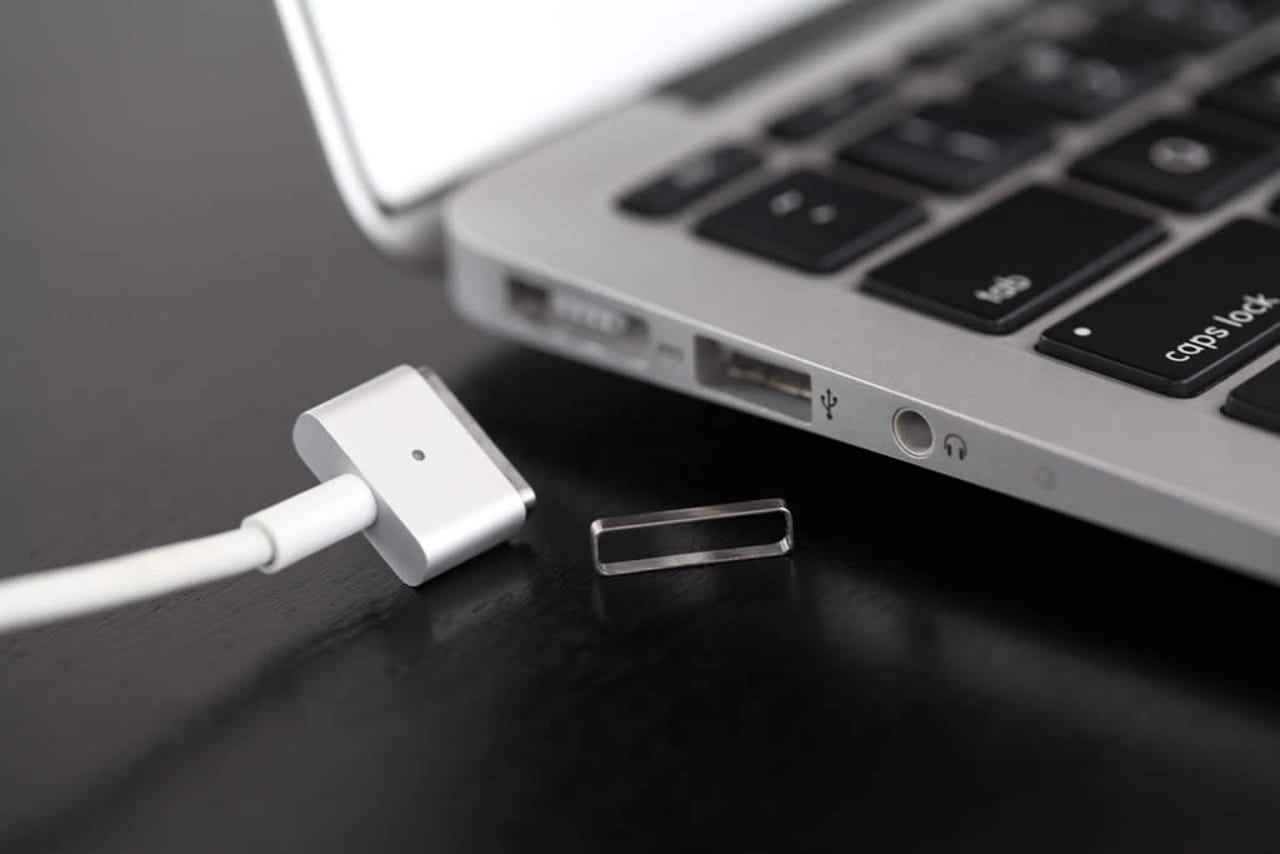The $20 fix that will end your MacBook MagSafe 2 power connector woes


I'm going to kick off this article with a tip-within-a-tip. Whenever I have a technical problem to solve, I first search on ZDNet for articles written by my ZDNet colleagues. That may sound like pandering, but it isn't.
More great project ideas
Whether it's Ed Bott, Steven J. Vaughan-Nichols, Jason Perlow, Adrian Kingsley-Hughes, or any of our 50 or so technical experts, I regularly find the answers to my tough questions from our very own contributors. If you haven't used search on this site to find back articles, you're missing a tremendous resource.
This time, I was trying to solve a complaint from my wife. A few months ago she appropriated my snazzy and very fast MacBook Pro. The deal was she could have mine, and when the new one came out, I could get that one. It was a pretty fair deal, although when I made it, I expected a new MacBook Pro to be out in the late spring, which did not happen. So, I'm certainly hoping the latest round of MacBook Pro rumors are true, and it comes out this fall.
In any case, she noticed that the magnetic power connector came off far too often. Our laptop usage styles are very different. I never actually use my laptops on my lap. They're usually on a coffee shop table with an IV of caffeine hooked up to my arm. The laptop rarely moves in that scenario, so the cord stays put.
But when she uses the laptop on her actual lap, the MacBook Pro moves around a bit, and the cable always comes out. It wasn't enough of an inconvenience for her to give me back the MacBook Pro, but it was certainly annoying enough for me to hear about it.
It's an odd problem that I honestly didn't expect to have a solution. Apple sometimes makes things that just do what they do and are annoying. You have to live with the annoyance if you're going to use Apple products.
Except, that wasn't true this time. A quick search on ZDNet turned up a 2014 article, by Adrian, on a little metal ring called a Snuglet. You just pop the ring inside your MagSafe 2 adapter socket, and the little ring magically fixes all the connector problems.
Snuglet is an example of a successful Kickstarter program. Back in 2013, the product was proposed on Kickstarter with a goal of $9,000. The designers raised $27,583 and were able to put the product into production.
Apparently, the ring is "machined to a tolerance of less than half the diameter of a human hair." That's necessary if you want to get a metallic ring to fit in the space between the adapter and the connector.
As far as I can tell from how Snuglet describes it, the ring itself is a metal alloy. It's not magnetic itself, but it extends the magnetic field of the MagSafe 2 adapter just a little farther, making the connection more secure. The designers say they examined the actual production MagSafe 2 socket on MacBooks with a scanning electron microscope to determine the tolerances required.
Three years after the Kickstarter program completed, the product is still available. We ordered two of them in a pack for just under twenty bucks. It was about the easiest installation possible. It just worked.
According to the company, the ring worked with all MacBook models that have a MagSafe 2 connector. Whether the company will have much of a market after the new MacBooks come out this fall is an open question, but for those who bought anything in the MacBook line in the last four years (other than the newest USB-C MacBook), this is a great solution.
It's also a relatively obscure solution. It's the sort of thing that only people-in-the-know know. And that brings me back to the resource that is all my colleagues here on ZDNet. They are definitely people in the know. Mine this resource. Do searches on previously written articles.
There is some amazingly valuable knowledge buried in previous articles and columns. And it's all available for you to use, for free, 24/7, worldwide. Ain't the Internet great?
You can follow my day-to-day project updates on social media. Be sure to follow me on Twitter at @DavidGewirtz, on Facebook at Facebook.com/DavidGewirtz, on Instagram at Instagram.com/DavidGewirtz, and on YouTube at YouTube.com/DavidGewirtzTV.